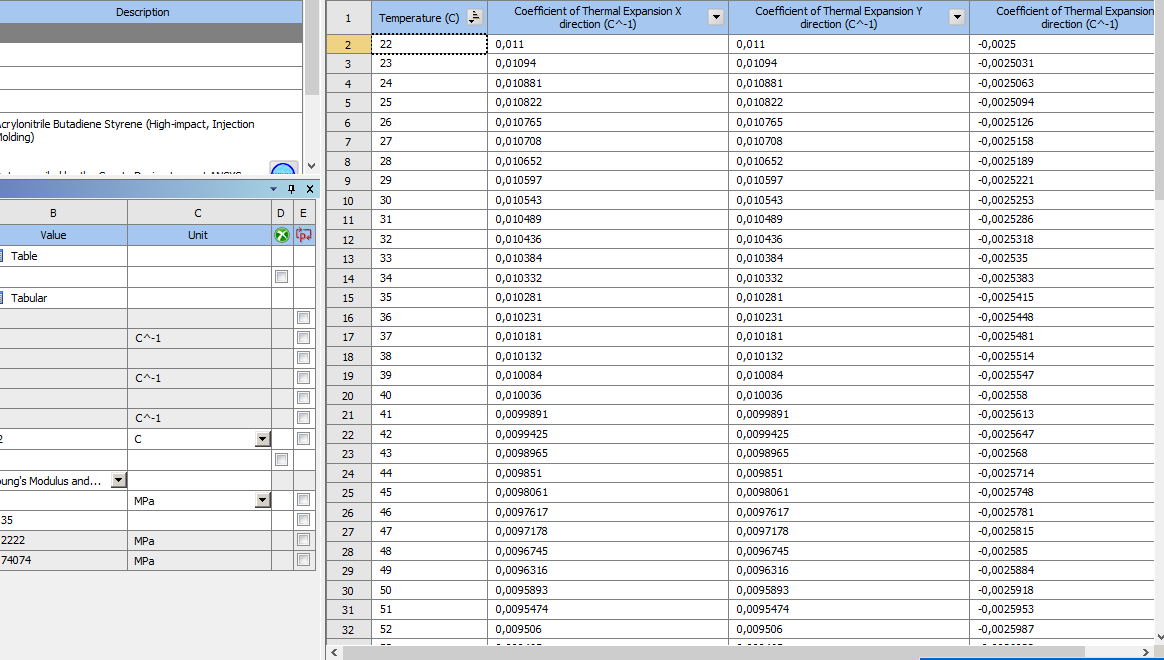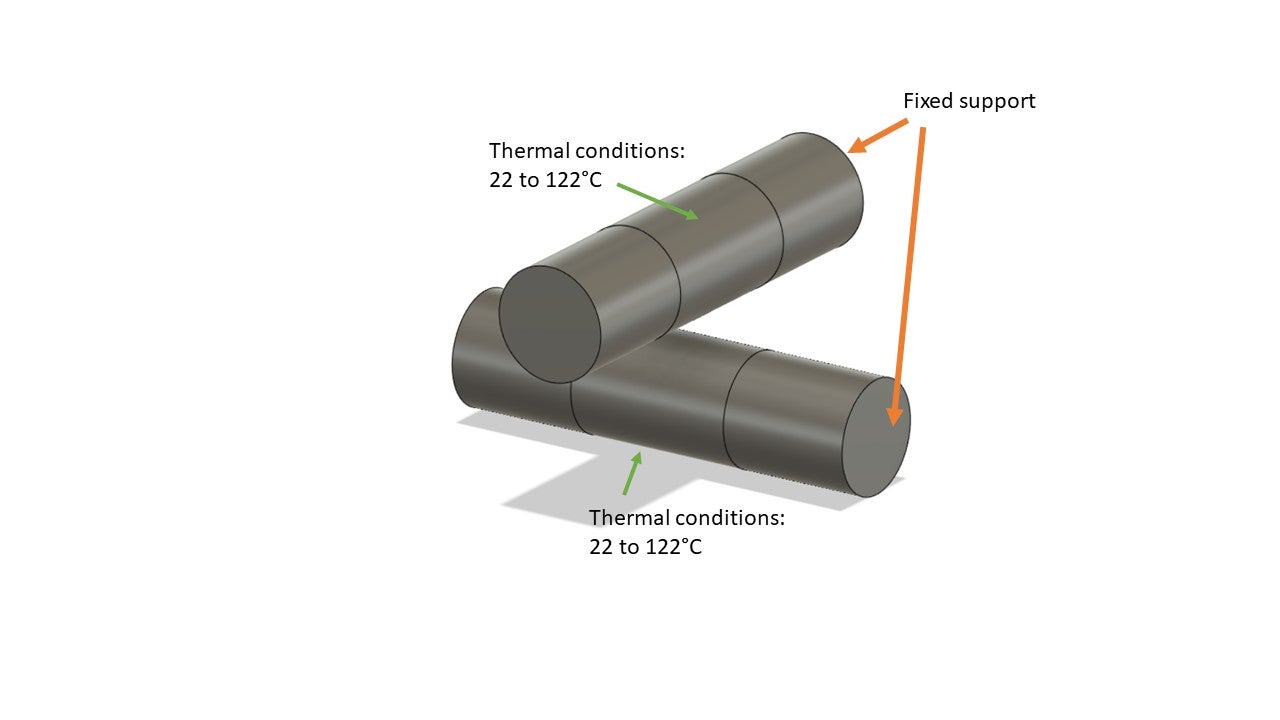TAGGED: ansys-mechanical, contact, static-structural
-
-
November 22, 2021 at 1:53 pm
F_Cir
SubscriberHi, unfortunately I cannot currently upload my simulation, but I would like to have some information. I attach as an image my geometry and data about the material used. The central body is the only one subjected to the thermal condition of expansion. When it expands, however, goes in contact with the upper central body that in turn expands. To simulate the thermal condition, coordinate systems have been defined to have a contraction along z (axis of the cylinder) and a radial expansion. Between the circular surfaces of the cylinders there is an MPC type contact. How can I simulate the contact between the upper and lower central body? Many people recommend creating a very large pinball region so as to include the two bodies, but despite this the bodies remain separate and the simulation does not converge. The contact you want to simulate is with friction, but as a first approximation a bonded contact is fine. Thank you for your help. In reality the simulation is more complex because the bodies are disposed along an arc of circumference, but currently I'm neglecting this aspect because the simulation doesn't go to convergence. Thank you for your help.
November 22, 2021 at 3:02 pmpeteroznewman
SubscriberIn the table from Engineering Data, you show an Orthotropic Secant CTE property, but you have used the same value in three directions, so why not just use Isotropic Secant CTE?
Also, the value you used is 1 /C but most materials have a CTE value of 1E-4 to 1E-6 /C. This may be the reason for your non-convergence.
Try using an Isotopic CTE with a value of 1E-5 /C and see if it converges.
The Young's modulus of 2E6 Pa is very low. A plastic has 2E9 Pa Young's Modulus. What kind of material is this?
November 22, 2021 at 3:18 pmF_Cir
SubscriberAs reported in the following article I have tried to simulate the radial expansion and axial contraction of the actuators by exploiting the thermal condition (it is as if the internal pressure that is fed into the actuators was simulated with a thermal condition) and therefore tests were conducted to derive the material data, as it is difficult to simulate the pneumatic actuator in its entirety. I attach the table I forgot with the different coefficients in the x and y direction and then those in z. Currently it is very difficult to allow these elements placed at an initial distance of a 1 mm to make contact. How can I do?

Viewing 2 reply threads- The topic ‘Contact beetween two separated bodies’ is closed to new replies.
Ansys Innovation SpaceTrending discussionsTop Contributors-
3597
-
1208
-
1092
-
1068
-
952
Top Rated Tags© 2025 Copyright ANSYS, Inc. All rights reserved.
Ansys does not support the usage of unauthorized Ansys software. Please visit www.ansys.com to obtain an official distribution.
-












